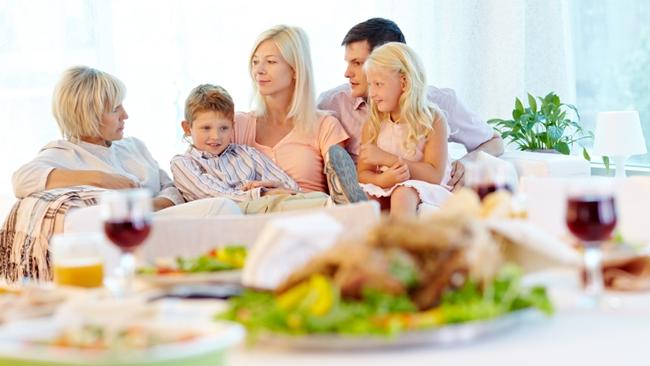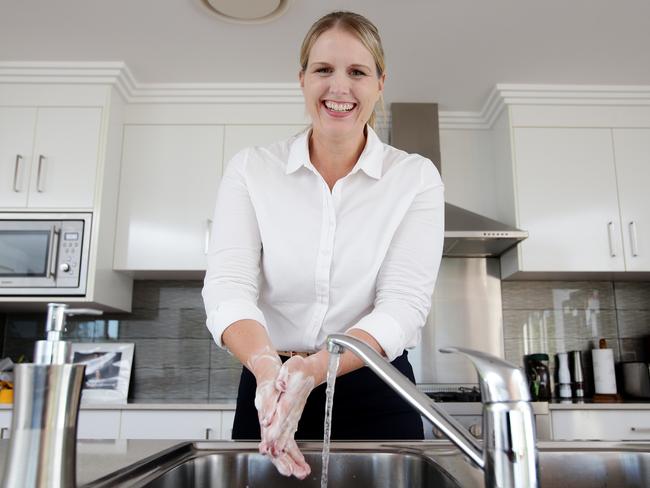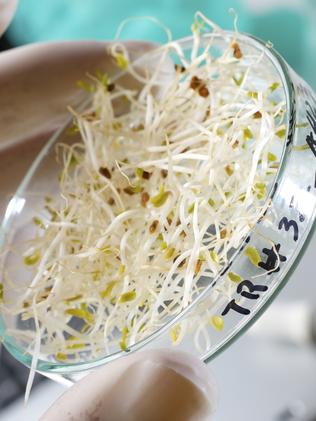Food safety: Preparation, storage, reheating and hygiene major factors
FOOD poisoning affects millions of Aussies every year. So what are we doing to our food that’s making us sick?

- MORE HEALTH HEADLINES IN BODY+SOUL
- AUSSIE WOMEN’S MOST SERIOUS HEALTH THREAT
- HOW TO THINK YOURSELF THIN
- THE HELL OF LIVING WITH OCD
EVER experienced that dreaded sensation that something just isn’t right in your stomach? You’re not alone.
In fact, it’s estimated that 4.1 million Aussies suffer from food poisoning each year. It’s usually caused by eating food contaminated with bacterial nasties such as salmonella, listeria, campylobacter or E. coli.
Symptoms range in severity, can take up to a few hours to rear their ugly heads and may last several days.

Common signs include nausea, vomiting, diarrhoea, cramping, headaches and fever. In severe cases, food poisoning can result in death.
While food safety is of utmost importance in any business that deals with food preparation, it’s also essential to handle meals safely at home.
Remember, children (especially under five), pregnant women and the elderly are much more vulnerable and prone to contaminated food or foodborne illness.
Keep foods at the correct temperature to delay the growth of harmful bacteria. Cold food must be kept at or below 5C and hot food must be maintained above 60C.

Use the thermometer in your fridge to regularly check the temperature. The standard in Australian fridges is to have a fresh food compartment average temperature of 3C. It’s a good number because it means not freezing those chicken drumsticks or lamb shanks.
Check hot foods, especially those that are reheated, using a spike thermometer, making sure the centre of the food is above 60C. Stir liquids, such as soups or casseroles, thoroughly before testing to ensure an even temp throughout.
Food safety takes into account not only hazardous foods, but also food preparation, storage and reheating as well as personal hygiene.
Here’s your guide to staying on the right side of food.
FOOD POISONING CAN BE CAUSED BY…
• Not cooking the food thoroughly enough to destroy harmful bacteria that rapidly grows in the food over time
• Storing foods at temperatures where bacteria can multiply in numbers, and that when consumed make us sick
• Someone with an illness handling the food or having poor hand hygiene
• Consuming food that’s beyond the use-by date or that’s been stored in the fridge for too long
• Contamination, where bacteria is spread from raw foods to cooked, from benchtops to utensils or by using unclean equipment.
FOODS TO WATCH
Some foods are more susceptible to contamination than others and are classed as hazardous. While many of these are common in Australian households, particular care must be used to ensure they’re handled safely. Examples of these foods include:
• Seafood
• Cooked rice and pasta
• Meat, especially raw and undercooked (rare)
• Raw chicken and turkey
• Raw or lightly cooked eggs, including mayonnaise made of raw eggs or mayonnaise that’s unpasteurised (hasn’t been heat-treated to kill bacteria)
• Pre-made salads, especially those with a mayonnaise base such as coleslaw or potato salad
• Unpasteurised dairy products.
SAFE STORAGE
How you keep food plays an important role in keeping bacteria at bay.
Follow these tips and you should be bug free:
• Pack groceries into the fridge as soon as you get home from the shops
• Freeze raw meat, chicken and fish if not being used within 24 hours
• Store raw meat on the bottom shelf away from vegetables and salad items
• Regularly check use-by dates on packaged food
• Refrigerate or freeze leftovers immediately after the meal. Cool piping- hot food before you place it in the freezer otherwise the centre won’t freeze and bacteria may grow. Divide into smaller containers to help chill
• Perishable leftovers in the fridge should be used up within two to three days
• Finally, when in doubt, throw it out.
FOOD PREPARATION
1. Always wash your hands thoroughly before touching food.
2. Thaw frozen food in the fridge — not on the kitchen bench.
3. Use colour-coded chopping boards to ensure raw meats are handled separately from fresh food.
4. Use hot soapy water or your dishwasher to clean utensils and chopping boards.
5. Regularly wash or replace your kitchen sponge or cloth, as this is the perfect place for bacteria to live.
KIDS’ LUNCHBOXES
1. Store items, such as frozen fruit and frozen water bottles, inside an insulated lunchbox pack.
2. Use a vacuum food jar to keep soups and reheated leftovers hot, or sushi, drinks and chilled salads icy cold.
3. Regularly wipe out the insulated bags, especially around seams.
4. A US study last year found that some school lunchboxes had as much bacteria as you’d expect to find in a train station toilet. Take note.
* For more on food safety, visit foodauthority.nsw.gov.au. The site has tonnes of information on cooking temperatures, recalled foods, a guide to starting your own food business and much more.
* Kate is an accredited practising dietitian. Find her on Facebook at facebook.com/KatediprimaAPD
Originally published as Food safety: Preparation, storage, reheating and hygiene major factors



